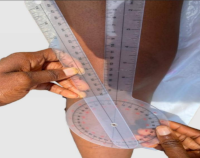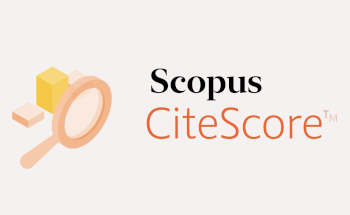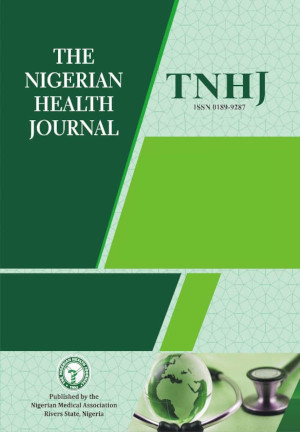Characterization of anthropometric parameters, lumbar flexibility and quadriceps angle of adult female users of high-heeled shoes in Calabar, Cross River, Nigeria.
DOI:
https://doi.org/10.71637/tnhj.v25i3.1176Keywords:
Anthropometric parameters, lumbar flexibility, quadriceps angle, high-heeled shoes, Adult femalesAbstract
Background: The suitability and health implications of high heel use are essential for users, designers, and health professionals. This study characterized the anthropometric parameters (height, weight, waist-circumference (WC), hip-circumference (HC), body mass index (BMI), and waist-hip ratio (WHR)), lumbar-flexibility (LF) and Quadriceps-angle (Q-angle) of adult female users of high-heeled shoes in Calabar.
Methods: A cross-sectional survey involving 100 adult female users of high-heeled shoes consecutively recruited from banks and the University of Calabar community. Participant’s age was obtained, heel-heights, height, weight, WC, HC, BMI, WHR, LF and Q-angle were measured with standard procedures. Descriptive statistics were used to summarize data, and inferential statistics of ANOVA, MANOVA and Pearson’s correlation coefficient analyzed data at p< 0.05.
Results: Participants’ mean age, height, weight, BMI, WC, HC, WHR, Q-angle, and LF were: 26.59±3.34 years, 1.61±0.08 m, 60.24±10.73 Kg, 23.01±3.51 Kg/m², 0.75±0.08m, 0.95±0.12m, 0.79±0.05, 10.30±1.59°, and 0.07±0.03m, respectively. Post-hoc analysis revealed significant difference (p< 0.05) between: users of 2- and 3-inches in BMI; 2-inches and 4-inches & above in Q-angle, 3-inches and 4-inches & above in Q-angles, and 2-inches and 4-inches & above in LF. Participants’ height, weight, BMI, WC, HC and WHR positively correlated significantly (p<0.05) with heel-heights, whereas LF and Q-angle negatively correlated significantly (p<0.05) with heel-heights.
Conclusion: Adult female users of 3-inches high heels have higher BMI than users of 2-inches, while users of 4-inches & above have lower LF than users of 2-inches. Heel heights are directly related with anthropometric parameters of adult females, but inversely with LF and Q-angle.
Downloads
References
1. Zeng Z, Liu Y, Hu X, Li P, Wang L. Effects of high-heeled shoes on lowerextremity biomechanics and balance in females: A systematic review and meta-analysis. BMC Public Health. 2023;23(1): 726-739. Doi: 10.1186/s12889-02315641-8.
2. Parmentier M-A. ‘High Heels’. Consumption markets & culture. 2016;19(6):511-519.
3. D’Angelo F. ‘Standing tall: The stiletto heel as material memory: A contemporary cross-cultural look at perceptions of the stiletto heel’. Doctoral Dissertation, 2016. York University, Toronto, Ont.
4. Weitzman S. Types of Heels – The Heel Style Guide [Internet]. New York, United States. STUART WEITZMAN®. 2025, August 1st.Available from: https://www.stuartweitzman.com/sw-scoop/shoe-style/types-of-heels.html.
5. Lorkowski J, Pokorski M. Harmful female footwear: A public health perspective. Heliyon. 2023 Oct 21;9(11):e21297. Doi: 10.1016/j.heliyon. 2023.e21297.
6. Broega AC, Righetto M, Ribeiro R. Female high heel shoes: a study of comfort. IOP Conf. Series: Materials Science and Engineering. 2017;254: 232001 Doi:10.1088/1757-899X/254/23/232001.
7. Bae YH, Ko M, Park YS, Lee SM. Effect of revised high-heeled shoes on foot pressure and static balance during standing. J PhysTher Sci. 2015;27(4): 1129-31. Doi: 10.1589/jpts.27.1129
8. Nwankwo MJ, Egwuonwu AV, Ezeukwu AO, Nwafulume CK. Effects of different heel heights on selected gait parameters of young undergraduate females. Arch Adv Biosci. 2012;3(3): 8-14.
9. Lee CM, JeongEH, Freivalds A. “Biomechanical effect of wearing high-heeled Shoes”.Int J IndErgon. 2001;(28): 321-326.
10. Hsiao HY, Guan Z, Chen YT. Effects of shoe heel height and shoe upper on forefoot biomechanics during walking. Appl Ergon. 2017;58: 425-431.
11. Shang J, Geng X, Wang C, Chen L, Zheng C, Huang J, Wang X, Yan A, Ma X. Influences of high-heeled shoe parameters on gait cycle, center of pressure trajectory, and plantar pressure in young females during treadmill walking. J Orthop Surg. 2020;28(2): 2309499020921978. Doi: 10.1177/2309499020921978.
12. Barnish M, Morgan HM, Barnish J. The 2016 HIGh Heels: Health effects and psychosexual BenefITS (HIGH HABITS) study: systematic review of reviews and additional primary studies. BMC Public Health. 2018;18(1):37. Doi: 10.1186/s12889-017-4573-4.
13. PatilP, Sidhaye-Bhadbhade N. The effect of heel type on Q angle. Int J Physiother Res. 2020;8(5): 3628-33. Doi: 10.16965/ijpr.2020.164.
14. Sharma R, Borkar P. Effect of high heels on strength of knee extensors and Q Angle in adult females: A systematic review. AIJMR24021051. 2024; 2(3): 1-9. Accessed at www.aijmr.com.
15. El-Shamy FS, Ghait AS, Morsy M. The effect of high heels on quadriceps angle in adult females. Int. J Ther Rehabil Res 2016;5(2): 35-38. Doi:10.5455/ijtrr.000000124.
16. Cronin NJ. The effects of high heeled shoes on female gait: a review. J ElectromyogrKinesiol. 2014;24(2): 258-63. Doi: 10.1016/j.jelekin.2014.01.004.
17. Dhuria A, Singh SK. Effect of loss of lumbar lordosis on spinal flexibility and function. IJHSR. 2024;14(8): 148-152.
18. Almurdi MM. Postural balance and functional mobility in relation to BMI and body composition among female students at a College of Applied Medical Sciences: A cross-sectional study. Clinics (Sao Paulo). 2024;79: 100401. Doi: 10.1016/j.clinsp.2024.100401.
19. Assi MH, Al-Rubai A-JF, Alwaeli AM. Effect of anthropometric parameters on quadriceps femoris (Q) angle: An analytical cross-sectional study from Iraq. Al-Rafidain J Med Sci. 2024;7(2): 61-5.
20. World health organization. Waist circumference and waist–hip ratio: report of a WHO expert consultation, Geneva, 8–11 December 2008. Available at: http://www.who.int/about/licensing/copyright_form/en/index.html.
21.Weiss L, DeForest B, Hammond K, Schilling B, Ferreira L. Reliability of goniometry-based Q-angle. PM R. 2013;5(9):763-8. Doi: 10.1016/j.pmrj.2013.03.023.
22. Merritt JL, McLean TJ, Erickson RP, Offord KP. Measurement of trunk flexibility in normal subjects: reproducibility of three clinical methods. Mayo Clin Proc. 1986;61(3):192-7. Doi: 10.1016/s0025-6196(12)61848-5.
23. National Center for Health Statistics (NCHS). National Health and Nutrition Examination Survey Data. Hyattsville, MD: U.S. Department of Health and Human Services, Centers for Disease Control and Prevention, 2017–2018.Available at: https://wwwn.cdc.gov/nchs/nhanes/continuousnhanes/default.aspx?BeginYear=2017
24. Schröder G. Influence of wearing personalized high heels on the posture of women of different ages: A clinical cross-sectional study. Int Med Care. 2019; 3. Doi: 10.15761/IMC.1000127.
25. Sonuyi AO, Akinpelu AO, Odole AC, Akinbo SRA. Normativevalues of selected anthropometric variables in Lagos Nigerian population. Orthop Muscul Syst. 2013;2: 133. Doi:10.4172/2161-0533.1000133.
26. Okafor CI, Raimi TH, Gezawa ID, Sabir AA, Enang O, Puepet F, Fasanmade OA, Ofoegbu EN, Odusan O. Performance of waist circumference and proposed cutoff levels for defining overweight and obesity in Nigerians. Ann Afr Med. 2016;15(4):185-193. Doi: 10.4103/1596-3519.194275.
27. Kanwal A, Faisal S, Mushtaq F, Jabbar M, Hassan Z, Chand M, Hussain SA. Level of physical activity among working females wearing high heels. JHRR. 2024;4(1):60-5. Available at: https://jhrlmc.com/index.php/home/article/view/313.
28. Raiman L, Amarnani R, Abdur-Rahman M, Marshall A, Mani-Babu S. The role of physical activity in obesity: let's actively manage obesity. Clin Med (Lond). 2023;23(4):311-317. Doi: 10.7861/clinmed.2023-0152.
29. Wade, T. Joel; Burch, Rebecca L.; Fisher, Maryanne L.; and Casper, Haley. "On a pedestal: High heels and the perceived attractiveness and evolutionary fitness of women. Pers Individ Dif. 2022; 188:111456. Doi: 10.1016/j.paid.2021.111456.
30. Watkins C, Leitch A. Using sexual selection theories to examine contextual variation in heterosexual women’s orientation toward high heels. Arch Sex Behav. 2020;49(3):849-860. Doi: 10.1007/s10508-019-01539-3.
31. Omololu BB, Ogunlade OS, Gopaldasani VK. Normal Q-angle in an adult Nigerian population. ClinOrthopRelat Res. 2009 Aug;467(8):2073-6. doi: 10.1007/s11999-008-0637-1.
32. Jaiyesimi A, Jegede O. Influence of gender and leg dominance on q-angle among young adult Nigerians. Afr J Physiother Rehabil Sci. 2009;1: 18–23.
33. Choudhary R, Malik M, Aslam A, Khurana D, Chauhan S. Effect of various parameters on Quadriceps angle in adult Indian population. J Clin Orthop Trauma. 2019;10(1):149-154. Doi: 10.1016/j.jcot.2017.11.011.
34. Gant H, Ghimire N, Min K, Musa I, Ashraf M, Lawan A. Impact of the Quadriceps Angle on Health and Injury Risk in Female Athletes. Int J Environ Res Public Health. 2024; 21(12):1547. Doi: 10.3390/ijerph21121547.
35. Khasawneh RR, Allouh MZ, Abu-El-Rub E. Measurement of the quadriceps (Q) angle with respect to various body parameters in young Arab population. PLoS One. 2019;14(6):e0218387. Doi: 10.1371/journal.pone.0218387.
36. Ghasemi M, Gholami-Borujeni B, Babagoltabar-Samakoush H. Heeled shoes increase muscle activity during gait in healthy females: A systematic review and meta-analysis. Gait Posture. 2025; 117:153-163. Doi: 10.1016/j.gaitpost.2024.12.020.
37. Drzał-Grabiec J, Snela S. Effect of high-heeled shoes on the parameters of body posture. Spine (Phila Pa 1976). 2013;38(20):1785-9. Doi: 10.1097/BRS.0b013e31829eef3f.
38. van der Heijde D, Landewé R, Feldtkeller E. Proposal of a linear definition of the Bath Ankylosing Spondylitis Metrology Index (BASMI) and comparison with the 2-step and 10-step definitions. Ann Rheum Dis. 2008;67(4):489-93. Doi: 10.1136/ard.2007.074724.
39. Sadler SG, Spink MJ, Ho A, De Jonge XJ, Chuter VH. Restriction in lateral bending range of motion, lumbar lordosis, and hamstring flexibility predicts the development of low back pain: a systematic review of prospective cohort studies. BMC Musculoskelet Disord. 2017;18(1):179. Doi: 10.1186/s12891-017-1534-0.

Published
Issue
Section
License
Copyright (c) 2025 Saturday N. Oghumu, Mary-Ann O. Esezobor, Ruth O. Nicholas, Peter A. Awhen, Anne U. Orobosa, Eguagie Okhuahesuyi, Kenneth A. Madume, Kayode I. Oke

This work is licensed under a Creative Commons Attribution-NonCommercial-ShareAlike 4.0 International License.
The Journal is owned, published and copyrighted by the Nigerian Medical Association, River state Branch. The copyright of papers published are vested in the journal and the publisher. In line with our open access policy and the Creative Commons Attribution License policy authors are allowed to share their work with an acknowledgement of the work's authorship and initial publication in this journal.
This is an open access journal which means that all content is freely available without charge to the user or his/her institution. Users are allowed to read, download, copy, distribute, print, search, or link to the full texts of the articles in this journal without asking prior permission from the publisher or the author.
The use of general descriptive names, trade names, trademarks, and so forth in this publication, even if not specifically identified, does not imply that these names are not protected by the relevant laws and regulations. While the advice and information in this journal are believed to be true and accurate on the date of its going to press, neither the authors, the editors, nor the publisher can accept any legal responsibility for any errors or omissions that may be made. The publisher makes no warranty, express or implied, with respect to the material contained herein.
TNHJ also supports open access archiving of articles published in the journal after three months of publication. Authors are permitted and encouraged to post their work online (e.g, in institutional repositories or on their website) within the stated period, as it can lead to productive exchanges, as well as earlier and greater citation of published work (See The Effect of Open Access). All requests for permission for open access archiving outside this period should be sent to the editor via email to editor@tnhjph.com.













